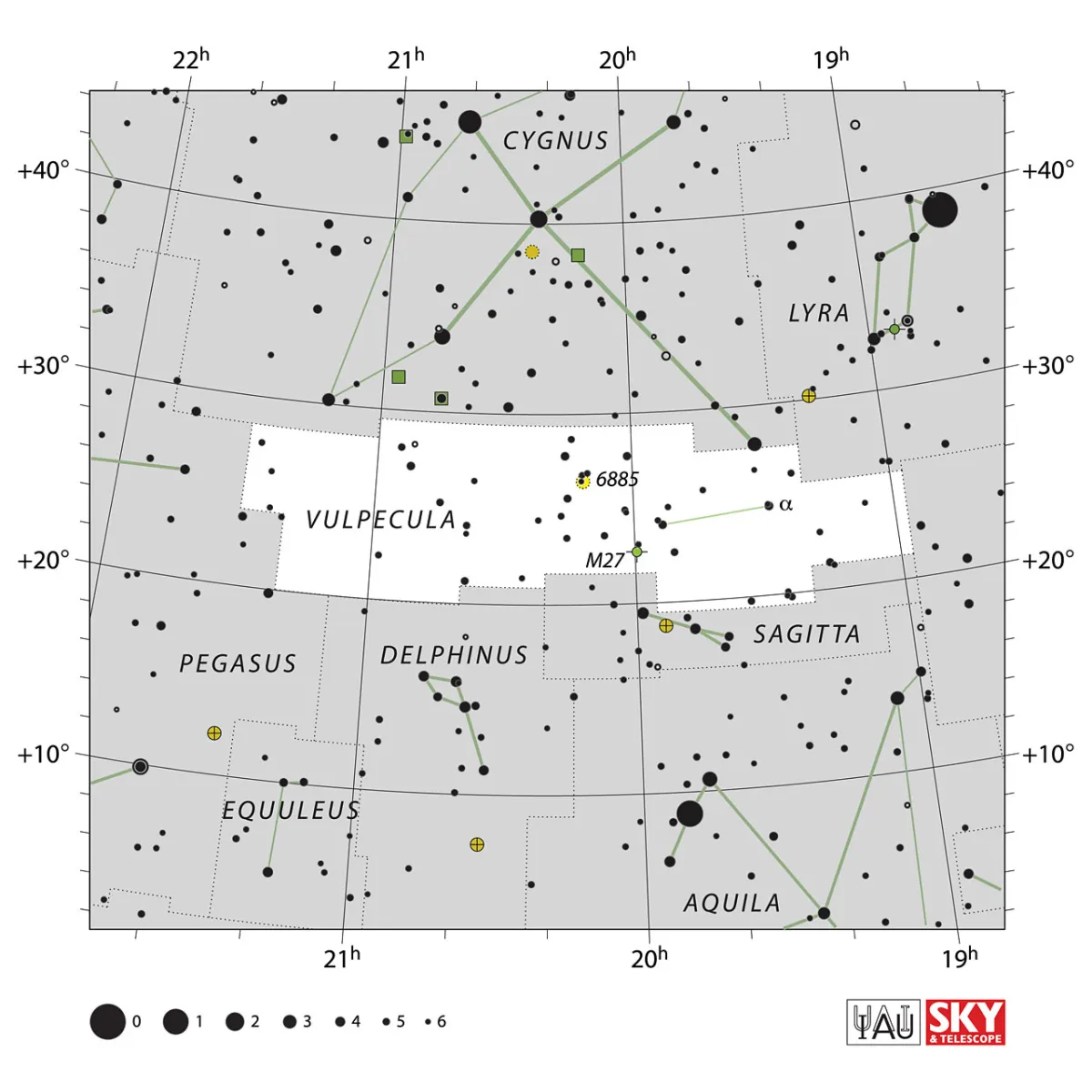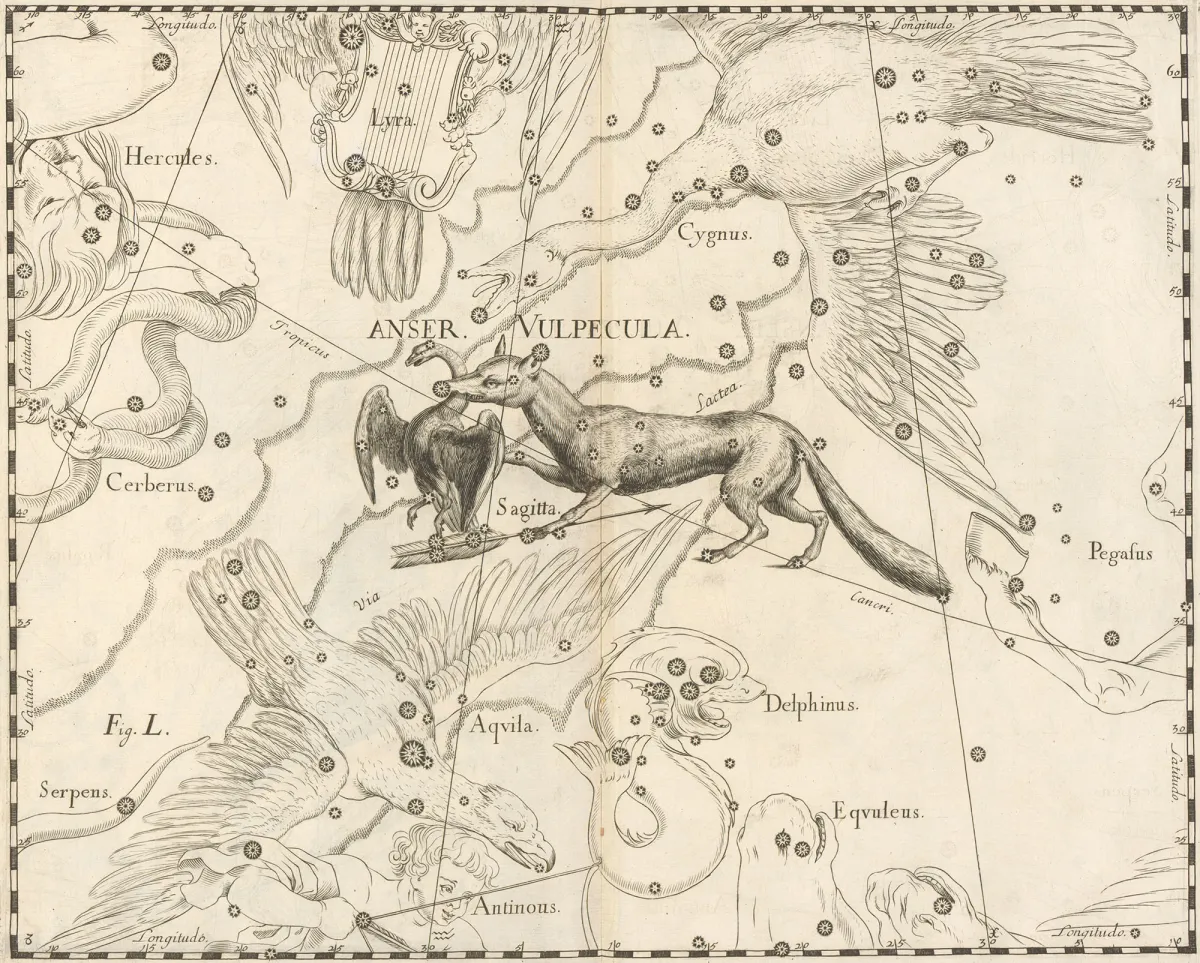Constellation Vulpecula (Fox)

Properties
Vulpecula is an inconspicuous constellation near the head of the Cygnus, consisting of few stars of approximately 4th magnitude that do not form a distinctive shape. It lies south of Cygnus and north of Sagitta and Delphinus. The constellation covers an area of 268 square degrees, and its centre culminates around midnight on 26 July. [9, 15]
| α Vul | Anser |
| IAU Name | Vulpecula |
| IAU Genitive | Vulpeculae |
| IAU Abbr. | Vul |
| English Name | Fox |
| Culmination at local midnight | 26 July |
| Season (Latitude +0.0°) | March … December |
| Right Ascension (J2000.0) | 18h 57m 07s … 21h 30m 39s |
| Declination (J2000.0) | +19° 23' 54" … +29° 29' 14" |
| Area | 268 deg2 |
| Neighbours (N↻) | Cyg, Lyr, Her, Sge, Del, Peg |
Deep-Sky Object Descriptions
Catalogues

History
The Danzig astronomer Johannes Hevelius introduced this constellation in 1690 as Vulpecula Cum Anser (the little fox and the goose), but by now the goose appears to have escaped from the little fox. Only the name of the star Anser (α Vulpeculae) still recalls it. [7]